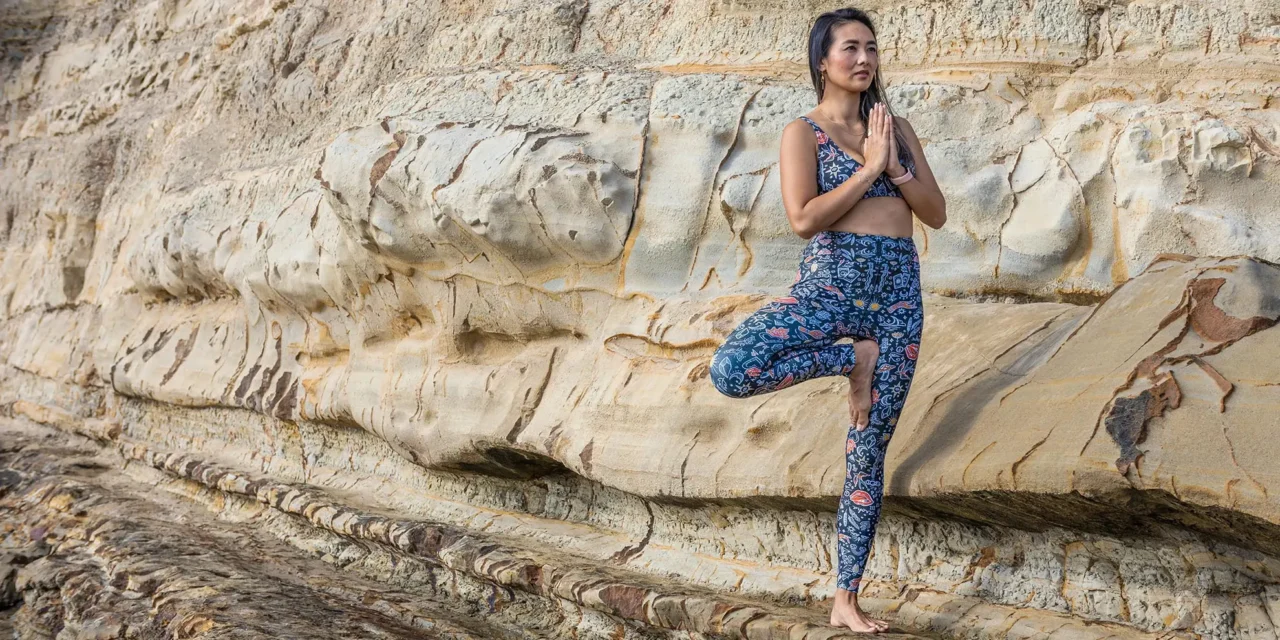In a world where stress and tension are constant companions, finding effective ways to relax and rejuvenate is crucial. Everyone could benefit from calming down the mind from time to time. Yoga, an ancient practice with roots in India, offers a holistic approach to well-being that extends beyond physical exercise. Through mindful movement, breath control, and meditation, yoga has been shown to reduce stress, lower cortisol levels, and improve blood pressure. This practice is non-negotiable for many, providing a pathway to physical health and cultivating mental clarity and emotional balance. This article will explore some of the best yoga poses for stress relief and overall wellness, highlighting their benefits and the science behind their calming effects.
Table of Contents
Reducing Stress and Cortisol
Many yoga poses (asanas) can help reduce stress, lower cortisol levels, and improve overall well-being. Looking to unlock the stress-busting power of yoga? Science shows us that specific poses can be game-changers for your stress levels when practiced regularly. A fascinating study in the Journal of Clinical and Diagnostic Research found that 12 weeks of consistent practice – including gentle forward folds, restorative inversions, and mindful twists – led to a remarkable 10% drop in morning stress hormone levels. These carefully chosen poses work together to help reset your body’s stress response system.
But which poses pack the biggest punch? When scientists analyzed 42 studies in the Journal of Psychiatric Research, they discovered that a combination of standing poses for strength, seated poses for stillness, and gentle inversions like Legs-Up-the-Wall created the most powerful stress-reducing effects. The research showed these benefits across all skill levels, from beginners to advanced practitioners, with powerful results for chronic stress patients.
The magic lies in how these poses work together, and they are best experienced in a Yoga studio. However, doing Yoga at home has many benefits and works well, too. From energizing Sun Salutations in the morning to calming Forward Folds in the evening, yoga helps normalize your body’s daily stress hormone rhythm and gets you out of your overthinking mind. Allow yourself to tap into some inner body wisdom when choosing the right pose for the right time: energizing poses to start your day (or to mood bust your funk), balancing poses to maintain equilibrium and shift your focus, and restorative poses to wind down and calm the nervous system. Here are our Top Ten posture to distress the mind.
Here are some of the best yoga poses known for their calming effects and physical benefits:
1. Child’s Pose (Balasana)
This gentle resting pose helps calm the mind and relieve stress while gently stretching the hips, thighs, and ankles. It is an excellent pose for relaxation and can help reduce fatigue and tension. Start by sitting on your knees. Use a cushion or a Yoga block if this is stressful on your knee joints. Fold over the front of your thighs, resting your forehead on the ground. You can use a prop such as a pillow or block as a more restorative take on this posture. Arms can reach out in front or backward. Experiment to feel what works for you.
2. Downward-Facing Dog (Adho Mukha Svanasana)
This foundational pose is reputed as the king of all postures. It’s tricky at first; it can take years to tweak and master. Downward Dog helps stretch and strengthen the body. As an inversion, it promotes blood flow to the brain, which can help reduce stress and anxiety. The pose also strengthens the arms, shoulders, and legs. Envision your body in a shape of a triangle with your butt to the sky and hands and feet on the ground. Keep a slight bend to the knees. Try and stretch your spine long with your butt as far back as possible. The bend in your knees can make this possible.
3. Cat-Cow Pose (Marjaryasana-Bitilasana)
This gentle flow between two poses helps increase spine flexibility and alleviate stress. It also massages the organs in the abdomen, improves circulation, and promotes relaxation. For this posture, you are on all fours- hands and feet. If you suffer from wrist issues, you can make a fist and have the thumbs point towards the front and fingers toward each other. For the Cat pose, you want to exhale and round the back like a scared cat, dropping the head. For the Cow pose, you reverse it by arching your back and lifting your head while you inhale. Ideally, move a few times slowly, coordinating your breath with your movements.
4. Standing Forward Bend (Uttanasana)
This pose helps calm the mind and relieve stress. It stretches the hamstrings, calves, and hips while strengthening the thighs and knees. The pose’s inversion (head upside down) aspect also helps improve circulation to the head. This pose is standing; be sure to start with slightly bent knees, then fold over from the waistline so your fingertips can touch the floor or somewhere on the legs. As you feel more flexible, you can straighten the legs, ensuring your torso is still close to the front of the thighs.
5. Legs Up the Wall Pose (Viparita Karani)
A restorative posture is considered an inversion since the blood flow from the legs is said to flow down. This can help relieve tired legs and feet and reduce varicose veins. It is also excellent for calming the nervous system and reducing stress. It promotes circulation and can help alleviate headaches. Find a wall and lay down on your back close to where the wall meets the floor with the legs up on the wall. You can use a cushion, pillow, or bolster under your hips to lift them for a more effective therapeutic result.
6. Corpse Pose (Savasana)
This pose promotes deep relaxation and stress relief, often practiced at the end of a yoga session. It helps calm the mind and reduce physical tension. Savasana is an essential pose for integrating the benefits of a yoga practice. A lovely welcome posture at the end of a Yoga class. You are simply laying down with the limbs away from the body. Letting everything go – your breath control and your thinking mind is recommended. Savasana is also great for guided meditation, such as Yoga Nidra.
7. Bridge Pose (Setu Bandhasana)
This pose stretches the chest, neck, and spine while calming the brain and reducing anxiety. It stimulates the abdominal organs, lungs, and thyroid, promoting overall well-being. On your back with your feet close to your butt and your knees bent pointing to the sky, lift the hips gently and lower down. Do a few rounds with your inhale on the lift and the exhale on lowering your hips down with control. Alternatively, you can use a block or bolster under your hips for a more restorative posture.
8. Tree Pose (Vrksasana)
A balancing pose that helps improve focus and concentration, Tree Pose also promotes a sense of grounding and stability. It strengthens the legs and core while promoting a calm and centered mind. Start standing with one foot. Place the other foot on the inner thigh or shin so the knee points outward. You are balancing on one leg, creating stability on either side of the knee joint. Any wobbles help strengthen this area and should be considered positively.
9. Seated Forward Bend (Paschimottanasana)
This pose stretches the spine, shoulders, and hamstrings. It helps calm the mind and relieve stress, making it an excellent pose for anxiety relief. Start by sitting on the floor, for those who arent flexible you can sit higher with a block or cushion. Stretch your legs out in front and from the hips fold in half. Imagine your heart going forward towards your toes, your hand can be place anywhere from the ground to the legs or grasping the toes. In this posture, you can relax your head. It is believed this is very helpful before bed.
10. Reclining Bound Angle Pose (Supta Baddha Konasana)
This restorative pose helps open the hips and relax the body. It is excellent for reducing stress, anxiety, and mild depression. The pose also promotes relaxation and can help with sleep disorders. Like the Seated Forward Bend, sit on a prop like a block or pillow if you aren’t flexible; otherwise, sit on the floor. Bend both knees outwards and bring the soles of your feet to meet before you. You can choose to stay upright or bend over your legs from here. You should feel a stretch through the inner thighs as you draw your knees downward.
The positive healing effect of Yoga poses creates a ripple effect throughout your entire system. When you flow through stress-reducing postures, you’re not just stretching but activating your body’s relaxation response. Each pose, from a straightforward Child’s Pose to a grounding Seated Forward Bend, contributes to better emotional balance, mental clarity, and immune function. It’s like having a toolkit of stress-management techniques, with each pose offering its unique way of pressing the reset button on stress. To experience the benefits of these poses, try to practice yoga regularly. You can start with a few minutes each day and gradually increase the duration and intensity of your practice. Remember to listen to your body and practice mindfulness, focusing on your breath and being present.
Additionally, consider joining a yoga class or following guided sessions online to ensure proper alignment and technique. Practicing yoga in a community setting can also enhance motivation and provide a supportive environment for growth and relaxation, not to mention the healing environment of a collective wellness community.
Incorporating these poses into your daily routine can cultivate peace, reduce stress, and improve overall well-being.

